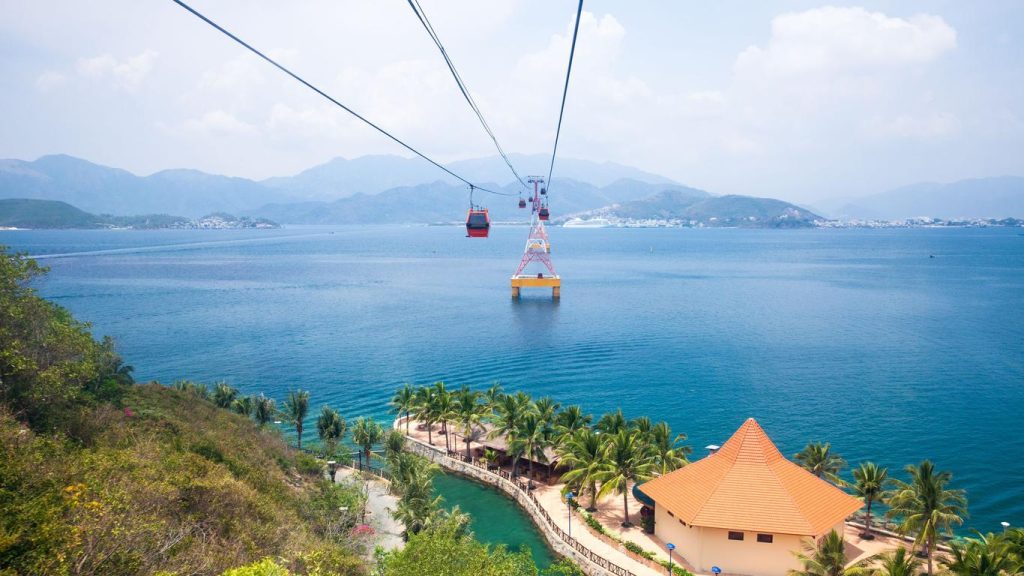Hue – A guide basic for the trip
Hue, Vietnam, situated in the central part of the country, holds a distinguished place in Vietnamese history and culture. As the former imperial capital during the Nguyen Dynasty from 1802 to 1945, Hue is renowned for its rich heritage and architectural marvels. At its heart lies the UNESCO-listed Imperial City (Đại Nội), a sprawling complex of palaces, temples, and gates that once housed the royal court. Surrounding the city, lush landscapes host majestic royal tombs like those of Emperor Khai Dinh and Emperor Minh Mang, showcasing intricate design and serene settings. Hue is also a cultural hub, known for its traditional arts such as Hue Royal Court Music (Nhã Nhạc) and its distinct cuisine influenced by royal tastes. Nestled along the Perfume River (Hương River), the city offers scenic views of pagodas and bridges, combining historical intrigue with natural beauty, making it a captivating destination for travelers seeking a deep immersion into Vietnam’s imperial past and cultural richness.
I. When is the best time to visit Hue Vietnam?
The best time to visit Hue, Vietnam, is from February to April and from September to October. During these months, the weather is generally pleasant with mild temperatures and lower humidity, making it comfortable for exploring the city’s historical sites and enjoying outdoor activities.
– February to April: This period is characterized by dry and mild weather, making it ideal for sightseeing and outdoor activities. The temperatures are comfortable, ranging from 20°C to 30°C (68°F to 86°F).
– September to October: These months mark the beginning of the dry season after the peak of summer, offering cooler temperatures and less rainfall. It’s a good time to visit to avoid the heat and humidity of the summer months.
Avoid visiting Hue during the peak of summer (June to August) when temperatures can soar and humidity levels are high, making outdoor activities less enjoyable. The rainy season (from October to December) brings frequent showers and occasional storms, which may disrupt travel plans and outdoor exploration.
II. What to do in Hue Vietnam?
In Hue, Vietnam, there are several captivating activities and attractions to explore, offering a blend of history, culture, and natural beauty. Here are some top things to do in Hue:
- Imperial City (Đại Nội): Explore the UNESCO-listed Imperial City, the former seat of Vietnam’s emperors during the Nguyen Dynasty. Marvel at the intricate architecture, royal palaces, temples, and gates within this vast citadel.
- Royal Tombs: Visit the elaborate royal tombs scattered around Hue, such as the Tomb of Emperor Khai Dinh and the Tomb of Emperor Minh Mang. These tombs are renowned for their stunning architecture, serene gardens, and historical significance.
- Thien Mu Pagoda: Discover the iconic Thien Mu Pagoda, a seven-story pagoda situated on the Perfume River. It’s one of Hue’s oldest and most beautiful religious sites, offering scenic views of the river and surrounding countryside.
- Perfume River Boat Trip: Take a relaxing boat trip along the Perfume River, passing by pagodas, temples, and riverside villages. Sunset cruises are particularly popular for capturing picturesque views of Hue’s skyline.
- Hue Royal Court Music (Nhã Nhạc): Attend a performance of Hue Royal Court Music, a traditional art form recognized by UNESCO for its cultural significance. These performances often take place within the Imperial City.
- Dong Ba Market: Experience the vibrant atmosphere of Dong Ba Market, Hue’s largest market, where you can sample local street food, buy souvenirs, and immerse yourself in daily local life.
- Cycling or Motorbike Tours: Explore the countryside and nearby villages on a bicycle or motorbike tour. This allows you to see rural life, ancient pagodas, and scenic landscapes away from the city center.
- Hue Cuisine: Indulge in Hue’s unique cuisine, known for its imperial roots and diverse flavors. Don’t miss specialties like bun bo Hue (spicy beef noodle soup), banh khoai (Hue-style pancakes), and various delicacies influenced by royal recipes.
- Hue Museum of Royal Fine Arts: Visit this museum to admire a collection of royal artifacts, including ceramics, paintings, and other treasures from the Nguyen Dynasty.
- Relax at Thuan An Beach: Take a short trip from Hue to Thuan An Beach, approximately 15 kilometers away, for a relaxing day by the sea and fresh seafood.
These activities offer a comprehensive experience of Hue’s rich history, cultural heritage, and natural beauty, making it a must-visit destination in Vietnam.
III. How to get to Hue Vietnam?
Getting to Hue, Vietnam, involves several transportation options depending on your starting point. Here are the common ways to reach Hue:
- By Air:
– Phu Bai International Airport (HUI)** serves Hue and is located about 15 kilometers south of the city center. Direct flights to Phu Bai Airport are available from major cities in Vietnam such as Hanoi and Ho Chi Minh City.
– From the airport, you can take a taxi or a pre-arranged transfer to reach your accommodation in Hue city, which typically takes around 20-30 minutes depending on traffic.
- By Train:
– The train is a popular and scenic way to travel to Hue from other cities in Vietnam, especially from Hanoi (north) and Ho Chi Minh City (south).
– Trains arrive at Hue Railway Station, which is centrally located in Hue city. From the station, you can easily find taxis or use ride-hailing apps to reach your hotel or destination within the city.
- By Bus:
– Buses connect Hue with various cities and towns throughout Vietnam. There are both local and long-distance buses available.
– Buses arrive at and depart from Hue Bus Station, which is situated about 3 kilometers southwest of the city center. From the bus station, you can take a taxi, motorbike taxi (xe om), or local bus to reach your accommodation.
- By Car or Motorbike:
– If you’re traveling from nearby cities like Da Nang or Hoi An, you can hire a car, take a taxi, or rent a motorbike for a scenic drive to Hue.
– The journey from Da Nang to Hue by car takes about 2-3 hours, depending on traffic and road conditions.
- By Motorbike (for adventurers):
– Some travelers opt to ride motorbikes from cities like Da Nang to Hue, enjoying the flexibility and adventure of Vietnam’s coastal roads.
– Ensure you have the necessary documentation and experience for riding in Vietnam, and be aware of road conditions and safety precautions.
Once you arrive in Hue, transportation within the city is mainly by taxi, motorbike taxi (xe om), bicycle, or on foot, depending on your preference and the distance to your destination. Hue’s compact size makes it relatively easy to explore on foot, especially within the central area where many of the historical attractions are located.







